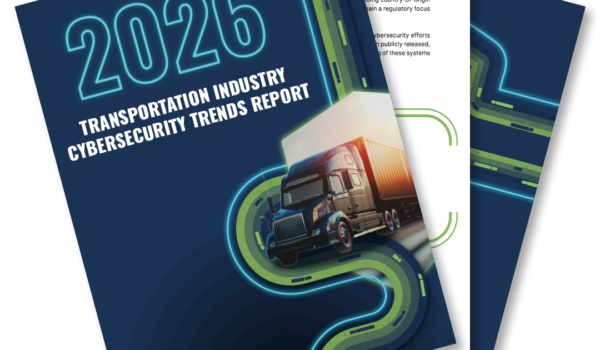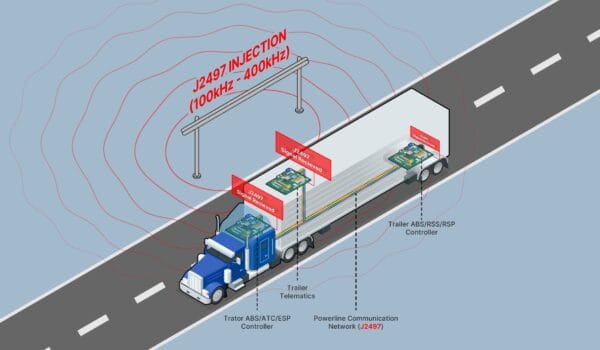In an industry known for moving goods fast, digital transformation hasn’t always kept the same pace. But that’s starting to change. From electronic bills of lading to real-time pickup visibility, the freight world is shifting toward a more connected, streamlined future. At the heart of this shift is the Digital Standards Development Council (DSDC)—a National Motor Freight Traffic Association (NMFTA)™-led initiative shaping how carriers, shippers, and third-party logistics providers (3PLs) build digital freight infrastructure that actually works together.
So, what exactly is the DSDC? And why should you care?
The Freight Industry’s Digital Problem
Despite the rise in freight tech investment—more than $2.9 billion poured in during 2023 alone—many carriers and their partners are still relying on emails, spreadsheets, and PDFs to complete core processes. In fact, McKinsey reports that companies accelerated the digitization of their customer and supply chain interactions by 3 to 4 years during the pandemic, yet most trucking companies haven’t caught up to those new expectations.
“We hear it all the time: ‘We want to go digital, but every integration feels like a custom job,’” says Keith Peterson, director of operations for NMFTA. “That’s what the DSDC is here to solve.”
What Is the DSDC?
The Digital Standards Development Council (DSDC) is a cross-industry initiative developed by NMFTA to standardize how freight partners connect digitally. It includes two working councils:
- Digital LTL Council – Focused on less-than-truckload (LTL) shipping
- Digital FTL Council – Focused on full truckload (FTL) operations
Rather than building software or application programming interfaces (APIs) for individual companies, the DSDC creates standardized API specifications—a common playbook of how digital systems should communicate. These are not plug-and-play tools, but rather well-defined instructions your developers can use to build faster, more compatible, and less expensive integrations.
“It’s like creating a shared language,” Peterson explains. “Everyone still builds their own system, but now we’re all reading from the same page.”
Why Standardization Matters
In today’s fragmented freight ecosystem, every connection between a carrier, shipper, and 3PL can feel like reinventing the wheel. Without a standard, one API for pickups looks completely different than another. That means costly development time, delays in onboarding new partners, and frequent integration failures.
And the pressure to go digital is growing. A recent industry survey found that 82% of logistics and supply chain professionals have increased their technology investments over the past three years, with particular focus on supply chain management systems and digital documentation. The industry isn’t waiting—and neither should you.
According to McKinsey, companies that invested early in digital tools during the pandemic were twice as likely to report outsized revenue growth. In other words, going digital pays off—but only if you can do it efficiently.
That’s where DSDC standards come in. They reduce time-to-implementation, improve data consistency, and make it easier to scale your digital ecosystem across multiple partners.
Real Results: APIs Already Live
The DSDC isn’t just a committee—it’s already delivered live, industry-tested standards. Current APIs include:
- Electronic Bill of Lading (eBOL)
- Pickup Request & Visibility
These APIs are being adopted by carriers, shippers, and 3PLs to reduce phone calls, and automate routine communication—making operations more seamless for everyone involved.
And that’s just the beginning. The DSDC is actively working on preliminary freight charges, appointment scheduling, benchmarking, invoicing, and documentation APIs to bring the same consistency to other high-friction freight workflows. These standards are designed to serve both LTL and FTL operations, ensuring consistent digital communication across different freight models. You can view the full roadmap here.
Digital Strategy = Business Strategy
Perhaps the most telling is how executive mindsets have shifted. Just a few years ago, nearly half of executives saw digital as a cost-saving tool. Now, more than half say they’re investing in digital as a competitive advantage (McKinsey, 2020).
Looking ahead, the DSDC is exploring ways to expand standardization beyond traditional trucking—supporting the growing need for seamless digital connections across all modes of logistics. That’s a fundamental change for the industry, and one that makes DSDC participation more urgent than ever.
“Whether you’re a regional carrier or a global shipper, these standards level the playing field,” says Peterson. “You don’t need to be a tech company to build like one.”
Best of all, the DSDC’s API instructions are open source and free to download, making it easier for companies of all sizes to start integrating without licensing barriers.
Get Involved: Join the Digital Movement
The DSDC is open to carriers, shippers, 3PLs, and technology providers. Whether you operate in LTL or full truckload shipping, now is the time to align with the standards that are defining the future of freight.
Visit dsdc.nmfta.org to learn more about:
- Participating in working groups;
- Downloading our available APIs; and
- Getting guidance on implementation.
Don’t let legacy systems hold your business back. Join the DSDC and help the industry move forward—together.






